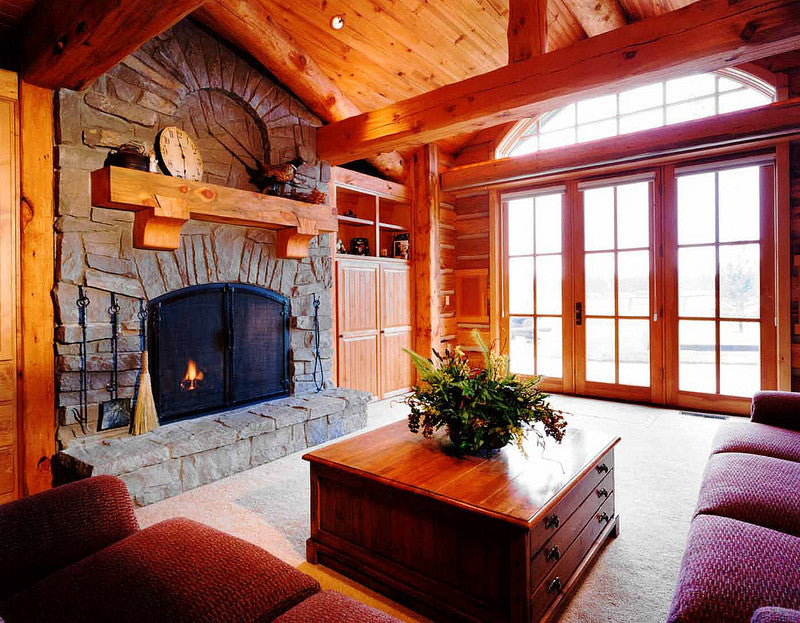Are Log Homes Insulated?

Home insulation is critical to energy and cost savings. Many people wonder if log homes are better insulated than framed ones with drywall. Log homes have the potential to be very well-insulated, as the logs themselves offer a degree of insulation. But for best results, you'll want to help Mother Nature along. Here's what you need to know about log home insulation.
Why Insulate a Log Home?
A log home owner should understand the R-values of insulation. The higher the R-value, the better the material insulates. Wood has an R-value of around 1.25 per inch (1.41 for softwoods and .75 for most hardwood). Home builders suggest a minimum R-value of R-11 in your walls. Wood alone falls short of this, so you'll want to apply some insulation in addition to the logs themselves.
Insulation in Log Homes is Different
There are several ways to insulate your log home without using inferior materials. One of them involves the very science of air flow. There's a propensity for moisture-laden (indoor) air to want to escape outward. If the outdoor temperatures are above freezing, the moist air will flow quickly outdoors, especially if there are gaps or cracks in your logs. Out goes the air you are paying for to heat or cool your home.
However, if the temperatures are below freezing, many log home owners will boil pots of water or use humidifiers around the home. This is so that when the dense, moist air tries to escape and hits the cold outside air, the water particles freeze, creating a frozen moisture barrier that keeps heat in and cold out.
The logs themselves also store heat. The inside of the logs can be warm, thanks to the interior heat, while exterior-facing parts of the log are cool. At night the warm logs will give the heat off until their temperature is the same as that of the room. This is why log homes often feel cozier than framed homes.
Chinking

Image via Flickr by Valerie Everett
If you've ever seen an old-fashioned log home, you might have noticed a white substance between the logs. This helps with construction, making up for irregularities in logs, as well as with insulation. Today, we suggest doing something similar. Regardless of the log construction method you use, you should place a thin layer of insulation between each log. After doing so, use caulking or chinking on the sides of the insulation.
A Final Tip About Log Home Insulation
Before beginning construction on your log home, make sure you use seasoned (dried) wood. If you don't, as the wood loses moisture you'll begin to experience cracks and gaps. These gaps will cause air leakage.
Moisture can continue to be a problem throughout your home's life, so many homeowners use wood with a moisture barrier. You can also protect your investment through generous roof overhangs and a good gutter system. If you guard against moisture causing cracks and apply insulation to your log home, you'll find it's very comfortable.
Featured image via Flickr by SteveBennettBuilders
